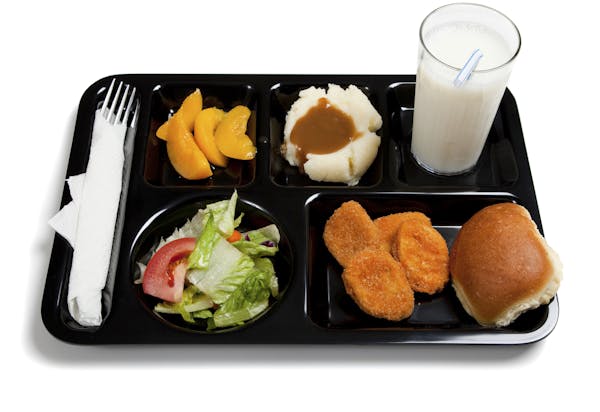Chanhassen High School students get a side of award-winning hummus with their vegetables, courtesy of district chef Steve Riley. His Eastern Carver County district is among those finding innovative ways to serve healthier foods and comply with federal regulations.
Minnesota schools offer a medley of healthy bites through such initiatives as farm-to-school, simple scratch recipes, school gardens and even hired chefs thanks to a national push for healthier school meals. After the Healthy, Hunger-Free Kids Act was adopted in 2010, districts across the state have worked to reform their school lunches.
While Congress has yet to move on reauthorizing the act, Minnesota school officials are giving no indication of slowing down with creative ways of incorporating healthy ingredients into their students' lunches.
"We are always on the forefront," said Julie Powers, president of the Minnesota School Nutrition Association.
Since the national act was set in motion, Minneapolis schools have worked with 12 farms and introduced 87 salad bars, said Bertrand Weber, Minneapolis Public Schools nutrition director.
"Our department in 2012 was operating as a pre-pack model where the food was prepackaged at the federal commissary and sent out to the school to be reheated," Weber said. "Since 2012, we have reopened 27 kitchens, where we cook from scratch."
Such efforts got a boost from a department of agriculture program that invested $1.46 million in 83 grants to 57 districts within the past four years. Districts such as Hopkins used grants to fund kitchen upgrades, like purchasing an immersion blender to create a roasted tomato sauce.
"We found a lot of schools wanted to buy local fresh fruits and vegetables," said Ashley Bress, program administrator for the AGRI Farm to School Grant Program. "If we invest in a school's infrastructure then they can go out and purchase from farmers."
In the Burnsville-Eagan-Savage school district, parents can take a closer look at their child's lunch. Through Nutrislice, a mobile app, parents have a digital view of their child's school meals that includes descriptions, photos and information about nutrition and potential allergens.
The Hopkins School District began assessing its meals in 2007. By 2009, the district had removed chicken nuggets from its menu, a move opposed by some students. Since then, the district has gradually made other menu changes.
"We were helping to build that capacity within students so that they would be adventurous eaters, open to trying new foods," said Barb Mechura, director of nutrition and lifestyle services for Hopkins.
Last year, the district added the Hmong American Farmers Association to its list of farm-to-school partners.
Mechura said about 95 percent of Hopkins High School's meals are from scratch, and about 80 percent in the elementary and middle schools.
Not all districts opted to comply with regulations calling for healthier meals. In 2015, three Minnesota districts, including Prior Lake-Savage, opted out of the National School Meals Program, forgoing federal funding. Restrictions on portion size and calories played a role in Prior Lake's decision.
Despite all the new health measures in Minnesota schools, a Blue Cross and Blue Shield of Minnesota poll found that 69 percent of parents are still concerned that not enough children have access to healthy meals and physical activity at school. Parents would like to see lunchtimes extended, more nutritional education and less unhealthy food at their students' schools.
"We hope that some of this data actually inspires parents to speak up about these things to advocate for the changes they want to see," said Janelle Waldock, Vice President of Community Health and Health Equity at Blue Cross and Blue Shield of Minnesota.
Amanda Clawson has two children in the White Bear Lake district. She said while her children's schools offer vegetables and fruits, there have been no major changes to the entrees served to students. Her children can still choose meals like cheesy bread and chicken nuggets.
"Neither of those have any nutritional value," she said. "They are not healthy options at all."
Clawson said progress has been slow since her time in high school.
"I think they definitely have healthier options now," she said. "But is it 25 years' worth of better options? I would say no."
Beatrice Dupuy • 612-673-1707

Marijuana's path to legality in Minnesota: A timeline

Minnesota to close state park on Iron Range, turn it back into a mine
U.S. Steel won't get exception to pollution rules that protect wild rice, MPCA says

Taste of Minnesota to be enjoyed on the ground and in the air this year

